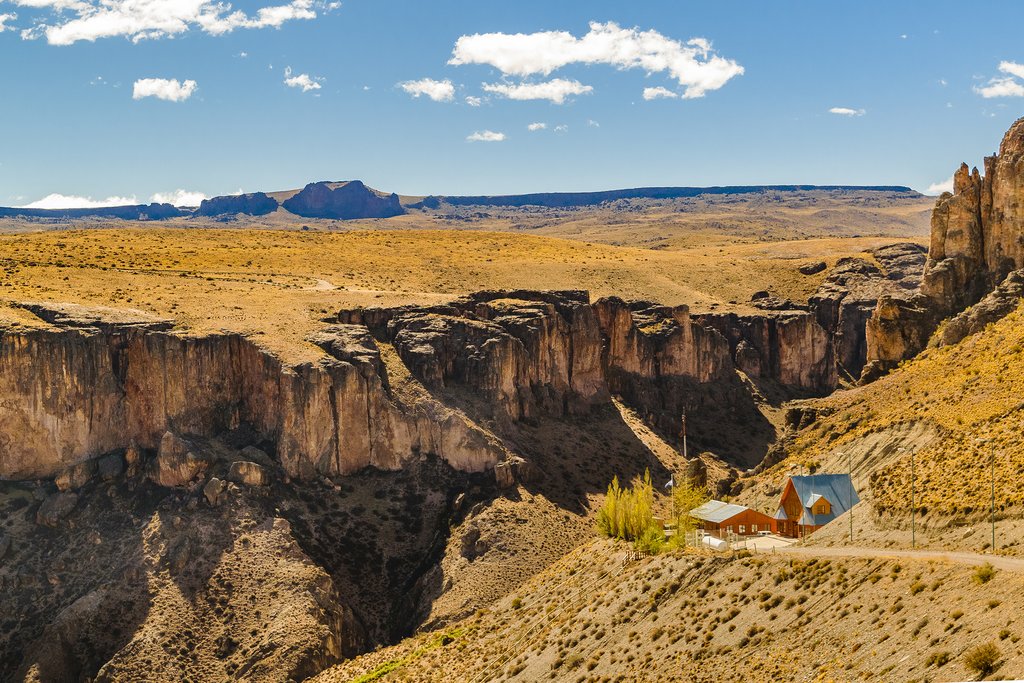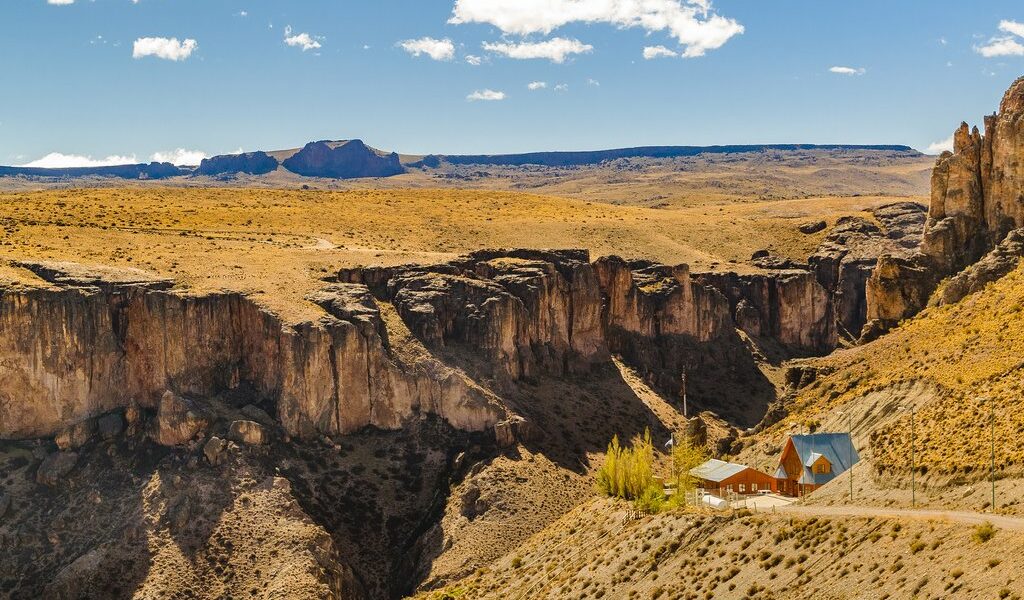
Come for the whale-watching and national parks, stay for the charming Welsh towns, little-known hot springs, and far-flung marble caves. Patagonia is huge, and while the classic attractions shouldn’t be missed, there’s plenty to see and do off the beaten path, from hiking to ancient cave art to sleeping beside a glacier.
## Unveiling Patagonia: A Journey Beyond the Familiar
Patagonia, a land of immense scale and breathtaking beauty, stretches across more than 648,000 square miles of South America. Its sheer size guarantees that no single visit can encompass all that it has to offer. As such, many travelers understandably focus on the region’s iconic landmarks, such as the majestic Torres del Paine National Park in Chile and the awe-inspiring Los Glaciares National Park on the Argentine side. These destinations are undoubtedly spectacular and deserve their place on any Patagonian itinerary. However, for those with the time and inclination to venture further afield, Patagonia holds a wealth of hidden gems and unique experiences waiting to be discovered. Embracing a detour or two will undoubtedly deepen your appreciation for the region’s diverse landscapes and rich cultural tapestry.
While air travel serves as a convenient means of arriving in Patagonia, the true essence of exploring this vast region lies in overland journeys. Be prepared to traverse considerable distances, including border crossings over the magnificent Andes Mountains. Whether you choose to rely on the extensive bus network, opt for the freedom of a rental car, or combine both modes of transport, meticulous planning is paramount. The logistics of traveling through Patagonia can be intricate, requiring careful consideration of routes, schedules, and border crossing procedures. Researching your options thoroughly before embarking on your adventure will save you time, stress, and potential complications along the way.
### Discover the Enchanting Marble Caves of Lago General Carrera
Perhaps you’ve caught a glimpse of their otherworldly beauty on social media platforms: the captivating Capillas de Mármol (Marble Caves) of Chile rank among the nation’s most frequently photographed natural wonders. Yet, their secluded location within the Aysén region means that many travelers, unfortunately, miss the opportunity to witness their splendor firsthand. Carved over countless millennia by the relentless forces of wind and erosion, these remarkable formations present a mesmerizing display of blue and white caves, a testament to the power of nature’s artistry. They reside on the tranquil waters of Lago General Carrera, the second-largest lake in South America, a body of water whose own beauty adds to the allure of the caves. Fed by the steady flow of glacial runoff, the lake boasts a striking turquoise hue, a visual spectacle in itself.
Today, visitors can embark on short boat excursions to explore the caves, departing from the charming lakeside town of Puerto Río Tranquilo. For photography enthusiasts, sunrise presents the most optimal lighting conditions, making an overnight stay in town highly recommended. This allows for an early start, ensuring you capture the ethereal beauty of the caves as they are bathed in the soft morning light. Reaching Puerto Río Tranquilo requires a considerable journey, a five-hour drive or a six-hour bus ride from the city of Coyhaique. However, the reward of witnessing the dawn illuminate the Marble Caves is an experience that undoubtedly justifies the effort, a moment of wonder that will remain etched in your memory long after you’ve left.
### Immerse Yourself in Welsh Heritage in Chubut
In this unique corner of Argentinian Patagonia, your basic Spanish skills might not suffice. Venture into the charming towns of Gaiman and Trevelin, nestled within the province of Chubut, and you’ll soon discover that the local landscape is interwoven with Welsh culture. Street signs proudly display Welsh names, advertisements feature the melodic language, and restaurant menus offer a taste of Welsh culinary traditions.
The story of this unique cultural enclave dates back to 1865 when a group of Welsh explorers embarked on a daring voyage to South America, seeking a vast expanse of land far from the constraints of urban life. They found their haven in a coastal region of northern Patagonia, where they established a Welsh settlement. While the agricultural conditions proved challenging compared to their homeland, they persevered, diligently recreating aspects of their Welsh heritage in this new environment. Traditional teahouses offer a taste of home, while the iconic Welsh water wheels stand as a symbol of their ingenuity. A visit to Trevelin’s Molino Andes Regional Museum provides further insight into their lives, showcasing Welsh stoves, dishes, and farming equipment, all transported across the ocean to establish a piece of Wales in Patagonia.
These Welsh towns in Argentina are conveniently located just an hour’s drive or bus ride from Puerto Madryn, a popular destination for whale-watching tours from June through December. A visit to both destinations offers a fascinating blend of natural wonders and cultural immersion, making for a truly enriching Patagonian experience.
### Discover Ancient Art at Cueva de las Manos
Prepare for an off-the-beaten-path adventure to witness the incredible cave paintings at Cueva de las Manos (Cave of the Hands). This UNESCO World Heritage Site, dating back to approximately 7370 BCE, presents a captivating glimpse into the lives and beliefs of ancient inhabitants. The cave walls are adorned with over 800 images, including the iconic human handprints, one of which mysteriously features six fingers instead of the usual five. Drawings of local flora and fauna further enrich the artistic tapestry, offering insights into the region’s past biodiversity.
The site’s remoteness is part of its allure, appealing to adventurous travelers seeking to escape the crowds. However, accessing Cueva de las Manos requires careful planning. The area’s limited tourism infrastructure makes it advisable to hire a local guide who can lead you directly to the cave paintings. Day trips can be organized from Perito Moreno or Los Antiguos, both relatively remote destinations in themselves. Be prepared for a bumpy ride, as the journey from either town takes between three and four hours along rugged terrain. Excitingly, trekking circuits to the cave are currently being developed as part of the plans for the future Patagonia National Park, promising even greater accessibility and enhanced visitor experiences in the years to come.
### Rejuvenate in the Hot Springs of Puyuhuapi
Nestled on a tranquil fjord of the same name, the remote Chilean village of Puyuhuapi stands as a hidden gem within Patagonia. This idyllic village serves as a gateway to the relatively unexplored Queulat National Park, a vast wilderness characterized by its glistening glaciers and lush evergreen forests.
The region is also renowned for its naturally occurring hot springs. Several resorts and spa complexes have been thoughtfully built around these geothermal wonders, harnessing the therapeutic benefits of the cascading warm and cool waters that flow into the man-made pools. After a long day of hiking and exploring, weary travelers can unwind and rejuvenate their bodies in the soothing embrace of these natural spas. Whether you choose to stay at one of the resorts or simply indulge in a day visit, the hot springs of Puyuhuapi offer a welcome respite before embarking on further adventures in the area.
Reaching Puyuhuapi requires a bit of planning. The village is located along the Carretera Austral, a legendary road known for its stunning scenery and challenging conditions. Opt for a bus that runs between Coyhaique and Chaitén, and inform the driver of your destination. Securing a round-trip ticket during the summer months is highly recommended, as seats can fill up quickly. Alternatively, you can embark on a self-drive adventure, but be sure to equip your vehicle with a spare tire and prepare for potential road closures due to weather conditions or maintenance.
### Behold Glacier Views at Cerro Tronador
While many travelers experience Patagonian glaciers from the comfort of a boat or along the well-maintained walkways of Perito Moreno Glacier in Los Glaciares National Park, other glaciers demand a more adventurous approach. Cerro Tronador Glacier, situated outside of Bariloche, Argentina, presents such a challenge. Unlike its more accessible counterparts, Cerro Tronador cannot be reached by car or bus, requiring an 11-mile hike to witness its glacial splendor.
Your journey begins at Pampa Linda in Nahuel Huapi National Park, accessible by shuttle bus or tour from Bariloche. The hours-long trek rewards hikers with breathtaking views of the Andes Mountains, culminating in the glittering surface of the glacier appearing in the distance. On a clear day, the sunlight reflects off the pools formed by glacial melt, creating a mesmerizing spectacle. Camping is permitted free of charge, allowing you to immerse yourself in the pristine wilderness. Alternatively, a refugio (mountain shelter) provides basic accommodation. Waking up to sweeping views of the glacier is an unforgettable experience, a testament to the raw beauty and untamed spirit of Patagonia.
This expanded version aims to provide a more descriptive and engaging narrative, exceeding the original word count while retaining all place names and omitting any URLs.
B-2021

